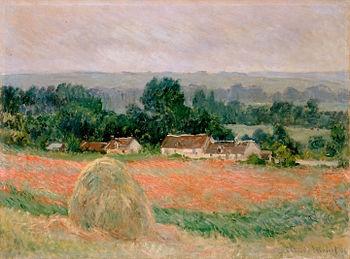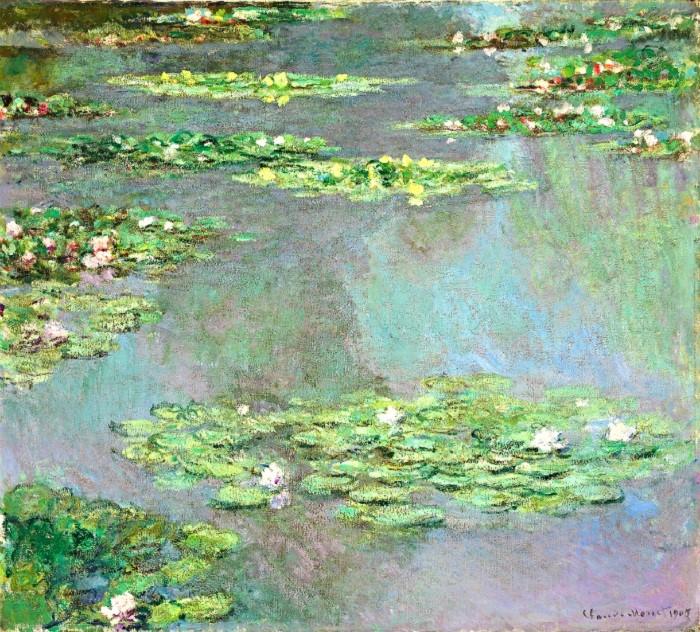Interesting facts about the life and work of the artist Claude Monet
During his 60-year career, Claude Monet (1840-1926) painted hundreds of magnificent landscapes: from the building of the British Parliament to water lilies in his own garden in the French town of Giverny. Monet is considered the founder of Impressionism not only because of his active involvement in the 19th century art movement, but also because the term “impressionism” originated from one of his own works.

1. Claude Monet was on friendly terms with other impressionists
In the 19th century, French artists could only promote and advertise (in modern terms) their paintings in one way – at the Paris Salon. This was the name of the annual government-sponsored exhibition and featured works selected by a very strict jury. Monet’s paintings were rejected, and then the artist teamed up with other early Impressionists, including Pierre-Auguste Renoir, Edgar Degas, Paul Cézanne and Camille Pissarro, to organize his own exhibition.
Read also: 5 interesting facts from the life of the abstract artist Wassily Kandinsky
2. The term “impressionism” appeared after a review of Monet’s painting “Impression. Rising sun “
At first, the artists gave their group a modest and not very noticeable name: the Anonymous Society of Artists, Sculptors, Engravers. Everything changed after their exhibition in 1874. Art historian and critic Louis Leroy looked at Monet’s painting and sarcastically used the word “impression”, to describe it as a work in progress or a rough sketch, stating in Le Charivari magazine that “The wallpaper is raw and even more finished than this marine look.”
The use of the word “impression” (impression) to characterize a new style of art took root and became its new name, and artists began to be called impressionists.

Photo Wikipedia
3. The garden at Giverny inspired Monet to create many paintings
The lush and lush greenery of the garden at the artist’s estate in the town of Giverny is depicted in many of his paintings. Monet began renting the house in 1883 and bought it out in 1890. He planted apple trees, poppies, wisterias and many other flowers there, which he carefully grouped by color, and then let the garden bloom and grow wildly without much care. Monet also set up a small pond by the stream, commissioning a local craftsman to design the now iconic Japanese bridge, and even ordered water lilies from Egypt and South America.

You might be interested in: Early spring in the paintings of artists: why thawed patches and mudslides are so attractive for a Russian person
4. One painting from the series “Haystacks” was sold for 110 million dollars
Monet immortalized on canvas not only his garden at Giverny. In 1890 and 1891, the artist painted about 30 paintings with haystacks in a field near his house, which became his very first series of paintings. Claude Monet was especially interested in how differently the light falls on the haystack, and he tried to quickly fix this moment before the sun changed its position.

Photo Wikipedia
“I work a lot, fight with a lot of different effects (haystacks), but this season the sun sets so quickly that I can’t keep up with it,” the artist wrote to art critic Gustave Jeffroy. “I see that I need to do a very big job to reproduce the play of light exactly the way I want it.”
In May 2019, one of Monet’s paintings “Haystack” was sold for $ 110.7 million, becoming the first Impressionist work to receive over $ 100 million at auction.
5. Vision problems did not prevent the artist from drawing
In 1912, Monet was diagnosed with cataracts, and his vision deteriorated catastrophically. By 1922, the artist was practically blind.
“Red seemed dull to me, pink – lifeless, and intermediate tones generally escaped me,” he described his condition.
During this time, Monet simply remembered where each paint color was on his palette in order to continue painting landscapes. He eventually agreed to the operation in 1923, and then began wearing tinted glasses to protect his eyes.
6. His “Water Lilies” were perceived coldly during his lifetime
A series of about 250 oil paintings called “Water Lilies” has not always been as popular as it is now. Critics were aware of Monet’s eye problems and suggested that the blurry water lilies are the result of his poor eyesight, and not the artist’s intention. After Monet’s death in 1926, most of the paintings in this series were kept in Giverny for about 20 years, and they became interested only in the 1950s. After the Museum of Modern Art in Paris exhibited Water Lilies in 1955 for the audience, Monet’s previously forgotten series gained international acclaim.
The most famous series by Claude Monet

Photo kulturologia.ru

Photo kulturologia.ru
- Rouen Cathedral (1892-1894)

- Parliament building (1899-1901)

- “Morning on the Seine“

- Water lilies (1914-1926)

Photo kulturologia.ru
Claude Monet quotes
- “When you start painting a picture, try to forget what objects are in front of you: a tree, a house, a field or something else. Just think, “Here is a small blue square, here is an oblong pink, and here is a yellow stripe,” and draw them as you see them to create your own simple view of the landscape. “
- “My only merit is that I painted nature directly, trying to convey my impressions of the most fleeting effects, and I am very sorry that my painting served as the name for a whole group, in which there was actually nothing impressionistic.”
- “Art is always the same: the transposition of Nature, which requires both willpower and subtle perception.”
- “For me, the landscape does not exist by itself, because its appearance changes every moment; however, it is enlivened by the environment – air and light, which are constantly changing … For me, only the surrounding atmosphere gives objects their true value. “
- “It has been a long time since I believed that you can educate the public for taste.”
- “When I see nature, I feel that I can capture everything – and then, when you work, this feeling disappears!”
- “I would like to draw a bird singing.”
What to give a friend?
Gift Certificate! You can give it to your loved one or use it yourself.
And we also give away a certificate for 3000 rubles every month. among new email subscribers. Subscribe!
Select a certificate in the store
Visit Bologny for more useful and informative articles!





